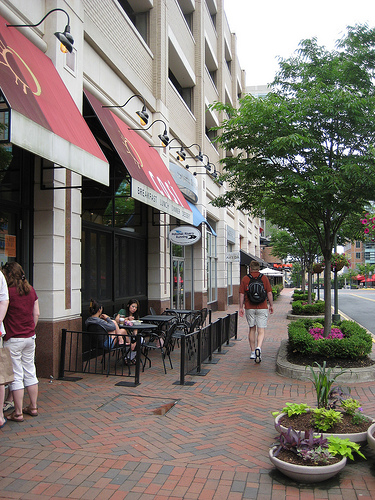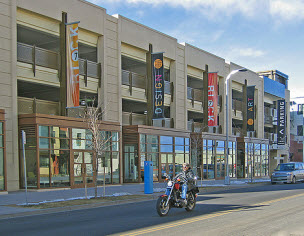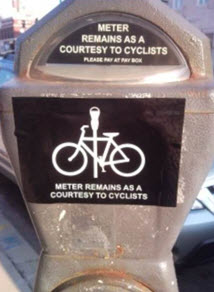Rather than focus our efforts on increasing the supply of parking, we need to better manage the supply that we have. Increasing the amount of parking that is shared, improving user information, and using pricing to curb demand are all strategies that can be implemented to improve the management of parking.
Good design features can help reduce negative impacts on a community and on the environment. The examples below show parking garages that maintain a pedestrian-friendly environment, with ground-level shopping and landscaping. Incorporating these elements around transit stations, and sharing the parking between uses has significant potential for creating a lively streetscape.
|
|
|
|
From Flickr user La Citta Vita |
From EPA Smart Growth |
Additionally, permeable paving, natural landscaping, and innovative stormwater management strategies can be used to reduce the environmental impact of parking and parking structures.
Each community around the region will need to evaluate specific goals for parking and design their strategy to promote their goals. The Transportation Authority of Marin has outlined parking design strategies tailored to various place types:
|
Place Type |
Parking Design Strategies |
|
Downtown Center |
Parking is primarily structured or underground. Large surface parking lots should be considered opportunities for infill development. |
|
Medium / High Density Neighborhood |
Parking is primarily structured or underground. Large surface parking lots should be considered opportunities for infill development. |
|
Mixed-use Corridor |
Mix of structured parking and limited surface parking. Surface parking lots are located behind buildings. Conversion of larger surface lots to structures with infill development should be considered. |
|
Town Center |
Mix of structured parking and limited surface parking. Surface parking lots are located behind buildings. Conversion of larger surface lots to structures with infill development should be considered. |
|
Medium- Density Neighborhood |
Structured parking is rare; surface parking is screened by buildings and landscaping. |
|
Local-serving commercial corridor |
Structured parking is rare; surface parking is screened by buildings and landscaping; and use of on-street parking should be maximized. |
|
Low / Med Density neighborhood |
Parking needs are accommodated by on-site garages and on-street parking. |
|
Suburban Corridor |
Structured parking does not occur; surface parking lots are screened by buildings and landscaping. |
|
Rural Center / "Crossroads" |
Structured parking does not occur; surface parking lots are screened by buildings and landscaping; and use of on-street parking should be maximized. |
|
Low / Rural Density Neighborhood |
Parking needs are accommodated by on-site garages, work yards, and on-street parking. |
|
Rural Corridor |
Little demand for parking for uses typically provided by small surface parking areas, with short-term and emergency parking on road shoulders. |


